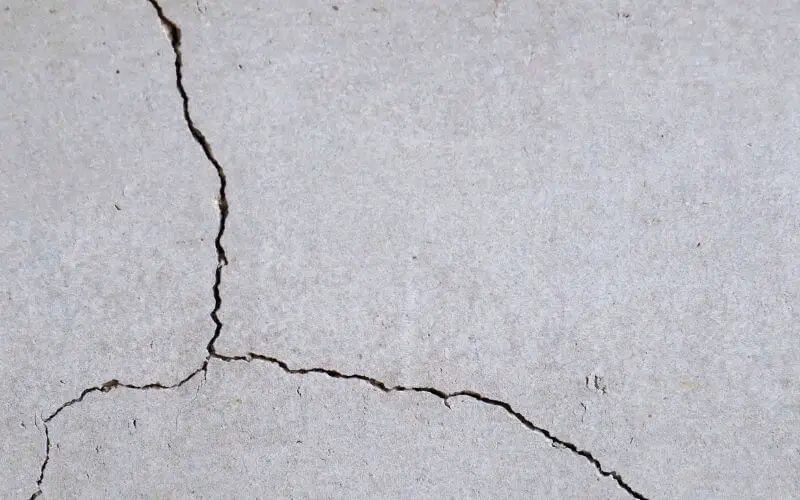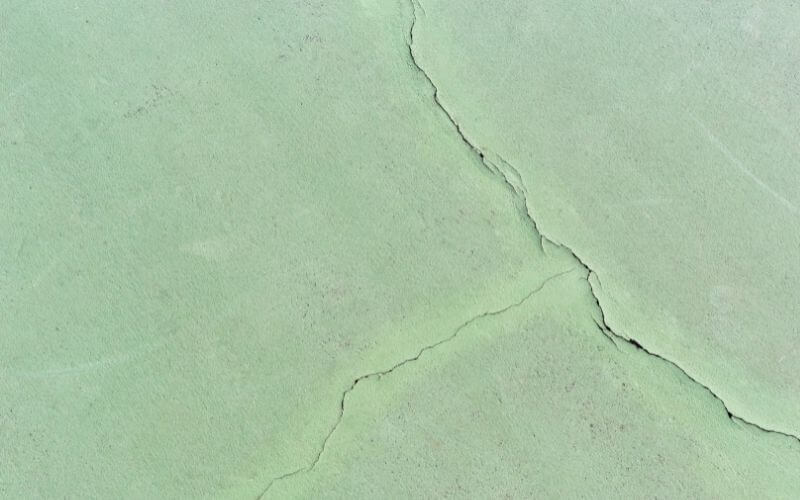Various safeguards are put in place during the construction of a house to guarantee that its foundations are waterproof.
On the other hand, concrete flooring can develop water leaks over time due to wear and tear, which comes with unfavorable long-term repercussions of water coming through the concrete.
Water leaking through a concrete floor is not only frustrating and bothersome but should be treated as an emergency.
The best way on how to stop water from coming through a concrete floor is to either install a french drain or waterproof the concrete floor.
The post will discuss various reasons water is coming through your concrete floor and how to stop it.
Read: How to clean stained concrete floor
Why is Water Coming Up Through Concrete Floor?
Table of Contents
Knowing why the water is coming through the concrete floor is the first step to fixing the issue. We will discuss various reasons why water is coming through concrete floor below
1. Sump Pumps & Weeping Tile
If a weeping tile becomes clogged, separated, or broken, it is more prone to lose track. It is installed at the foundation’s base, and if it becomes blocked, water will take advantage of the situation and begin putting pressure on the material, leading it to break and lose functioning.
Damaged sump pumps, leaking tiles, or window wells are another typical cause of water coming through concrete floors.
When the sump pump fails to drain water properly, water tables rise and slowly begin to enter the residence. This is mainly due to aging, poor cleaning, and debris buildup.
Read: How thick can a floor leveler be poured
2. Faulty Pipes
You may have great pipes within your home, but you never know the state of the sewage pipes outside – hiding around or beneath the walls and foundations.
They clog and break from time to time, whether due to poor maintenance or freezing, allowing massive amounts of toxic sewer water to flow freely through the soil and into the concrete floor.
3. Poor installation of pipes
Your contractor could have used low-quality pipes or might have installed them incorrectly, resulting in dents.
Add to that the natural abrasion in running water, and the pipes could rupture. Water also contains some type of chemical, which can cause pipe bursts.
4. Pressure and Friction
While we all appreciate good water pressure, it is not good for the pipes if combined with other difficulties such as improper installation.
Another issue is soil movement. Tree roots, for example, can cause the earth to shift, putting pressure on the pipes until they break.
Friction is caused by abrasion in the water. When this is combined with the pipes rubbing against the concrete, it is possible that the pipes will explode.
5. Cracks
Water can sneak through internal gaps in the walls and become trapped in the concrete, producing mold and degradation.
Read: How to stop tile floors from cracking
6. Your Concrete Floor may be Sweating
The idea that your concrete floor is sweating might seem a bit absurd, but it’s not. It’s likely that the water isn’t seeping through the concrete but that your floor is “sweating.”
A damp concrete floor can be created by condensation from warmer moist air hitting the concrete, similar to how the outside of a glass sweats on a hot day.
For this to happen, the concrete floor must be colder than the surrounding air. The air could have cooled to the same temperature as the concrete, which is usually in the spring in locations with cold winters.
Read: What you need to know about latex floor
How to Stop Water from Coming Through Concrete Floor?
1. Repair Cracks
The most common way for water to leak through concrete is through floor fractures. Ignoring fractures in your concrete floor, even if they are only 1/8 inch wide, is like inviting water into your home. Use a concrete patching product, which is available at hardware and home improvement stores, to seal these cracks.
Start by cleaning the crack with a damp cloth, then use a putty knife or trowel to apply the patching compound
2. Seal up the Joints
Any joint in your concrete floor is an invitation for water to come through the concrete floor. The easiest approach to prevent water from entering these areas is to seal them using an exterior-grade sealant.
Seal any joint between the floor and the walls, as well as any expansion joints installed in your concrete floor slab. Also, seal any floor fixtures that protrude, such as pipes or heaters, as water can slip in through these openings.
A silicate-based sealant product available in all hardware and home improvement stores can be used to seal up the joints. When applied, the sealant will penetrate the small gaps in the concrete surface that allow water to seep through.
3. Install a French drain
When the land surrounding the foundation is soggy, there is a greater chance of seepage, especially if the issue is not corrected. Using a drainage system near the foundation is a particularly effective technique for mitigating the problem.
Although it will not address the entire problem, using a French drain provides a method for routing some of the water stored against the exterior wall to a drainage basin positioned below.
4. Waterproofing the Concrete
When a leak is discovered in the basement, it frequently indicates a problem with the waterproofing.
To avoid water from seeping into the concrete and inflicting irreversible damage, the cause of the problem must be identified before working on the foundation.
If just minor cracks, a silicate-based sealant can be used to cover up the cracks. But if the entire foundation walls have significant defects, the complete waterproofing system must be inspected, and professionals called in to fix it.
5. Test if Your Concrete Floor is Sweating and Fix it With a Dehumidifier
Remember that we mentioned that in some cases, water might not be seeping in through your concrete floors. It is possible that your concrete floor is sweating. First, how do you identify a sweating concrete floor? Follow the steps below:
1. Wait until the concrete is completely dry.
2. Cut a 16-by-16-inch square of plastic sheeting.
3. Securely tape it to the garage floor, ensuring there are no air spaces on all four corners.
4. Allow it to sit until the concrete appears wet.
5. Remove the plastic when the concrete appears to be damp. If the concrete beneath the plastic is dry, your floor is sweating. If you notice dampness under the plastic, moisture is leaking through your floor.
An important follow-up question should be, how do you stop your concrete floor from sweating.
To stop a sweating floor, you must alter the conditions that cause it to sweat. This includes using a dehumidifier to remove moisture from the air or directing a fan towards the floor to prevent the air from resting long enough to condense.
Read: Best Vacuum for Concrete Floors
Conclusion
Fixing water coming through your concrete floor entails understanding the initial problem. Most often than not, if you’re not so good with renovation problems, you might have to call in a professional to fix the problem.
We hope this post on how to stop water from coming through concrete floor will give you an idea of how to solve the problem.

